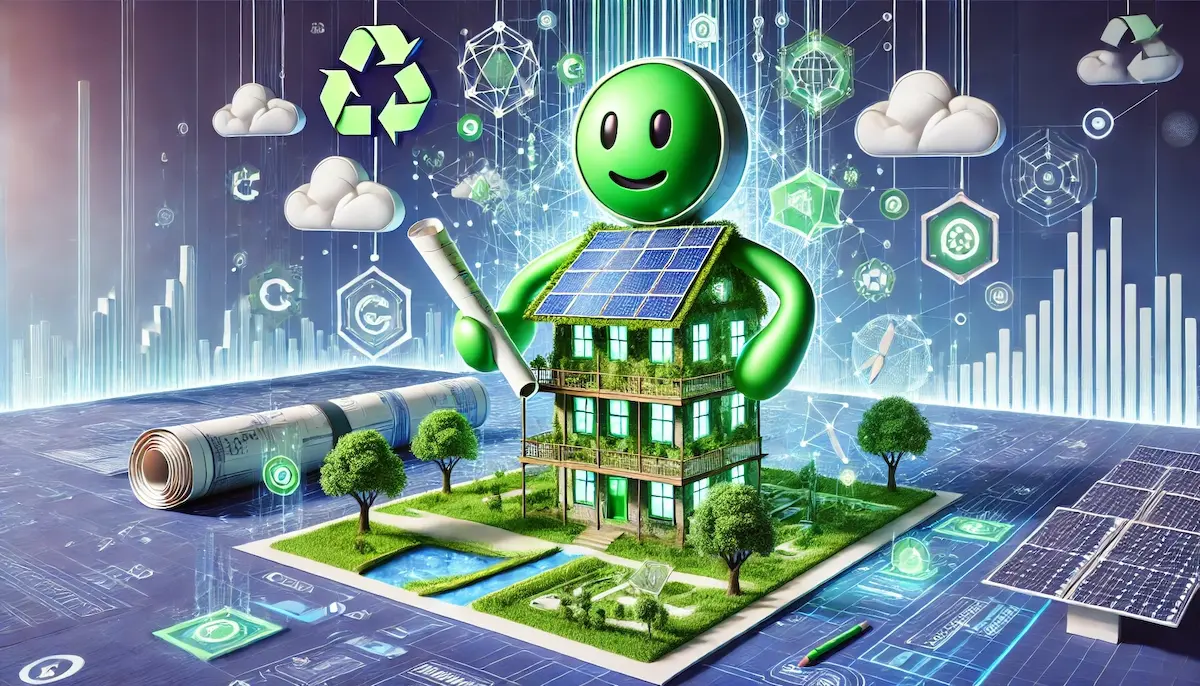Green architecture, also known as sustainable architecture or eco-architecture, is an approach to building design and construction that prioritizes environmental sustainability, energy efficiency, and the well-being of occupants. This holistic method integrates eco-friendly materials, technologies, and practices to minimize the environmental impact of buildings and promote a healthier, more sustainable lifestyle.
What is Green Architecture?
Green architecture involves designing and constructing buildings in a way that reduces their carbon footprint, conserves resources, and enhances the quality of life for occupants. This approach encompasses a wide range of practices, from using sustainable materials and energy-efficient systems to integrating renewable energy sources and creating healthy indoor environments.
Key Principles of Green Architecture
Energy Efficiency
Energy efficiency is a cornerstone of green architecture. Buildings are designed to consume less energy by incorporating features such as:
- Insulation: High-quality insulation reduces the need for heating and cooling, maintaining comfortable indoor temperatures with minimal energy use.
- Energy-Efficient Windows: Double or triple-glazed windows reduce heat loss and gain, improving thermal performance.
- Passive Solar Design: Orienting buildings to maximize natural light and heat from the sun reduces the need for artificial lighting and heating.
- Energy-Efficient HVAC Systems: Heating, ventilation, and air conditioning systems are designed to use less energy while maintaining optimal indoor conditions.
Renewable Energy Integration
Incorporating renewable energy sources into building design reduces reliance on fossil fuels and lowers greenhouse gas emissions. Common renewable energy solutions in green architecture include:
- Solar Panels: Photovoltaic (PV) panels convert sunlight into electricity, providing a clean energy source for buildings.
- Wind Turbines: Small-scale wind turbines can generate electricity for buildings in windy areas.
- Geothermal Systems: Geothermal heat pumps use the stable temperature of the earth to heat and cool buildings efficiently.
Sustainable Materials
Using sustainable, low-impact materials is essential for reducing the environmental footprint of buildings. Key sustainable materials include:
- Recycled and Reclaimed Materials: Using materials made from recycled content or repurposing materials from old buildings reduces waste and conserves resources.
- Locally Sourced Materials: Sourcing materials locally minimizes transportation emissions and supports the local economy.
- Rapidly Renewable Materials: Materials such as bamboo and cork regenerate quickly, making them more sustainable than traditional options like hardwood.
- Low-Emission Materials: Using materials with low volatile organic compound (VOC) emissions improves indoor air quality and reduces health risks.
Water Conservation
Green architecture includes strategies to conserve water and manage its use efficiently:
- Low-Flow Fixtures: Installing low-flow faucets, showerheads, and toilets reduces water consumption.
- Rainwater Harvesting: Collecting and storing rainwater for non-potable uses such as irrigation and toilet flushing.
- Greywater Systems: Reusing greywater (wastewater from sinks, showers, and washing machines) for landscape irrigation or flushing toilets.
Indoor Environmental Quality
Creating a healthy indoor environment is a key aspect of green architecture. This involves:
- Natural Ventilation: Designing buildings to promote airflow and reduce reliance on mechanical ventilation systems.
- Daylighting: Maximizing the use of natural light to improve indoor lighting quality and reduce energy consumption.
- Non-Toxic Materials: Using materials free from harmful chemicals and VOCs to improve indoor air quality.
- Biophilic Design: Integrating natural elements like plants and water features to enhance the connection to nature and improve mental well-being.
Benefits of Green Architecture
Environmental Impact
Green architecture significantly reduces the environmental impact of buildings by conserving resources, lowering energy consumption, and minimizing waste. Sustainable buildings contribute to the reduction of greenhouse gas emissions and help combat climate change.
Economic Savings
Energy-efficient buildings reduce utility costs by lowering energy and water consumption. Although green buildings may have higher upfront costs, the long-term savings in operational expenses often outweigh these initial investments. Additionally, green buildings can have higher property values and attract environmentally conscious tenants and buyers.
Health and Well-Being
Green buildings promote healthier indoor environments by improving air quality, increasing natural light, and reducing exposure to harmful chemicals. These features enhance the comfort and well-being of occupants, leading to increased productivity and overall satisfaction.
Resource Conservation
By using sustainable materials and efficient systems, green architecture conserves natural resources and reduces the strain on ecosystems. This approach supports the long-term sustainability of building practices and contributes to a more resilient built environment.
Challenges and Future Outlook
Despite its many benefits, green architecture faces challenges such as higher initial costs, the need for specialized knowledge, and regulatory barriers. However, as awareness of environmental issues grows and technology advances, these challenges are gradually being addressed.
The future of green architecture looks promising, with ongoing innovations and increasing demand for sustainable buildings driving the field forward. Key trends include:
- Smart Building Technology: Integrating IoT devices and smart systems to optimize energy use, enhance comfort, and improve building management.
- Net-Zero Energy Buildings: Designing buildings that produce as much energy as they consume through renewable energy and efficiency measures.
- Circular Economy Principles: Emphasizing the reuse and recycling of building materials to create a closed-loop system in construction.
- Climate Resilience: Designing buildings to withstand climate change impacts, such as extreme weather events and rising sea levels.
As the world shifts towards sustainability, green architecture will play a crucial role in creating a more environmentally friendly, economically viable, and socially responsible built environment.
Blockfine thanks you for reading and hopes you found this article helpful.
